The earliest history of ancient Rome is somewhat clouded in mystery. Judging from its glorious past that spanned many centuries, you would think that it was well documented and crystal clear. But alas, time is ever a trickster. The archaic peoples of the Italian peninsula are still a source of much enigma and remain an interesting subject for continued research. And what better way to learn of a culture’s deepest roots than through archaeology?
The Praeneste fibula was a sensation when it was presented back in 1887. With its unique inscription it posed a conundrum for the leading experts of the time. Was its inscription an authentic Old Latin sentence? Or simply an elaborate hoax? Today we will be dissecting this subject down to its minutest detail as we try to uncover the truth and understand the significance of such a discovery for the puzzling story of the ancient Italic peoples.
The History of Fibulae
First of all, let’s get acquainted with the term fibula, although some of you might not be familiar with this historically important object. As it is the key part of this story, we need to understand it better. A fibula is a brooch, usually designed in a “crossbow” manner. With an archaic safety pin design, these accessories were widely popular in ancient times and became an unavoidable part of every garment all over Europe.
They were used most commonly for fastening garments, typically cloaks, and soon became a symbol of position and wealth. Those rich and influential enough could usually afford elaborate fibulae made from gold or adorned with jewels. Many ancient cultures created their own styles of fibulae, which made for easy distinguishing.
Over time they became symbolic, with different fibula shapes used to denote social or marital status. Married women wore a certain type of fibula, warriors wore another, while chiefs had the most elaborate ones of all. In the case of the Praeneste fibula, it is agreed that it belongs to a certain type of fibulae that was popular in the region, known as the drago. This type is characterized by a short and twisted “bow” portion, with short lateral knobs, and a long catch.

Selection of early Roman bow fibulae. (Shawn Michael Caza / CC BY-SA 2.5 )
The Praeneste Fibula and Its Famed Inscription
Moving on to the artifact itself. The so-called Fibula Praenestina , the Italian name for the Praeneste fibula, was presented to the general public for the first time in 1887. This was done by a famed archeologist of the time, and a learned scholar, Wolfgang Helbig (1839 – 1915). Helbig was an exceptional expert of Etruscan history and its antiquities.
When the news of its discovery hit the scholarly circles of Europe, excitement ensued amongst historians and archaeologists of the time. A discovery of a brooch in and of itself is not a very exciting discovery, as these are discovered on a regular basis. But what did capture their attention was its inscription. Ever since it was announced, scholars have been divided over the authenticity of the writing.
Many reports claim that Helbig did not state how the object came into his possession, but this is untrue. Upon further investigation, it was confirmed that Helbig published three articles in the scholarly magazine Römische Mitteilungen (Roman Announcements). In them he stated that the fibula was acquired by a close friend in the Italian city of Palestrina in 1871 and that the fibula was only a part of a larger treasure, one that was uncovered from the Bernardini Tomb in Palestrina.
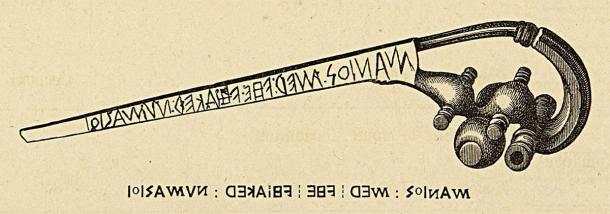
Illustration of the famed Praeneste fibula published in 1887. ( Public domain )
Shedding the Light on its Origins: Treasures of Bernardini Tomb
Further details tell us that the fibula was previously owned by an antiquarian from that very city, one Francesco Martinetti. This man was also involved in the excavation of the Bernardini Tomb some years prior to that, which yielded numerous magnificent grave goods, supposedly including the Praeneste fibula. This confirmation began circulating in scholarly sources as early as 1898, giving further credibility to the find by Helbig.
But that is where the matter becomes a little tricky. The “hoax” claims mostly rely on the fact that neither Helbig, nor Francesco Martineti, ever confirmed the source of the fibula. This is largely due to the fact that if they did so, it would have meant that Martineti possessed it illegally, i.e. he stole it.
At the time, the treasures of the Tomba Bernardini (Bernardini Tomb) were on display at Italy’s National Prehistoric and Ethnographic Museum. Around 1900, the fibula was transferred to the museum, cited to be a “special gift” by Martineti. It appears that the fibula was there after displayed as a separate piece, possibly to avoid unnecessary gossip or scandal in the scholarly circles. There after all future publications about the Bernardini Tomb treasures excluded the fibula. In 1960, they were further separated, when the grave goods where transferred to the Museum of Villa Giulia, where they are still on display today.
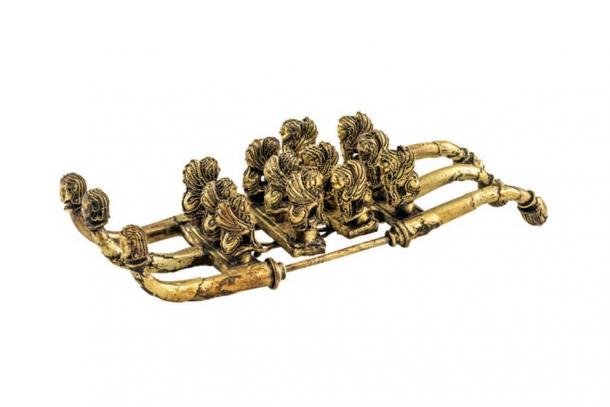
The Bernardini Tomb grave goods, such as this golden affibbiaglio, discovered in the necropolis of Palestrina were sent to the National Etruscan Museum of Villa Giulia, thus separating them from the Praeneste fibula. Will they be reunited some day? (National Etruscan Museum of Villa Giulia / MIBACT)
Where Did Claims of a Hoax Come From?
The first major hoax claim came well after the 1880s, long after Helbig’s death. In 1979, the then Italian expert of ethnography and a respected scholar, Margherita Guarducci claimed that the Praeneste fibula was a creation of Wolfgang Helbig’s imagination, and not authentic at all. She relied on the latter’s great expertise in Etruscan history and its language, which would allow him to skillfully fake the whole thing.
Her accusation carried weight. Thanks to her knowledge and expertise, and the fact that the matter was presented before the scholarly assembly of Italy’s Accademia dei Lincei in Rome, this became a well publicized event. From that moment onwards, scholars in Italy and throughout Europe descended into a long and heated debate, with separate opinions on the authenticity of what happens to be one of the most important archeological discoveries in Italy.
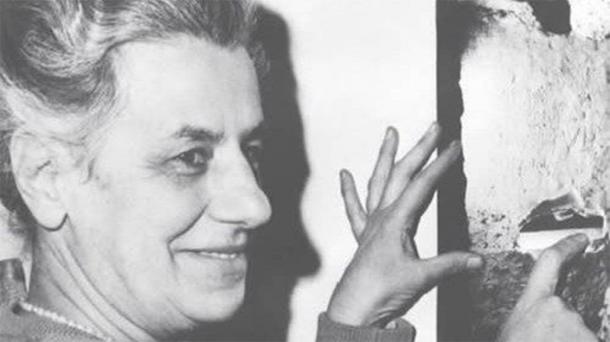
In 1979, long after Hebig’s death, Margherita Guarducci claimed that the Praeneste fibula was a hoax. ( L’Osservatore Romano )
The Indo-European Link: Studying the Inscription
But what makes the fibula so significant? Just 4.2 inches long (10.7 cm), it is made of gold and dates back to the 7 th century BC. Moderately ornamented and generally unimpressive, it probably would have been lost to oblivion had it now been for the inscription. Along its side, along the entire length of the fibula, is an etched sentence in what is considered to be Old Latin, or even Proto-Latino-Faliscan language. As such, it is the oldest such evidence of Old Latin to have been discovered. The inscription is as follows:
MANIOS : MED : FHE:FHAKED : NUMASIOI
Translated, it says: “ Manios made me for Numasioi .” The sentence provides an important glimpse into the archaic languages of the Italian peninsula and the Italic tribes in general, and helps us understand the transition from Proto-Indo-European to Proto-Italic, and then to Old and Classical Latin. This was a long process. Scholars managed to reconstruct the above sentence into its Proto-Italic form, which shows great difference from Latin that would emerge later:
*Mānjos mē fefaked Numazjōi.
This just goes to show us how magnificent the long journey of the Indo-European languages really was and how languages can take a distinct form when peoples are separated over time. The reconstructed sentence above can almost pass for a Proto-Germanic language and can only be connected to Latin after careful consideration. To help you put this into perspective, here is the same sentence in Classical Latin:
MANIVS ME FECIT NVMERIO.
Written from right to left, it utilizes the alphabet of the greater Etruscan Civilization. Etruscan, just like Latin and Faliscan, was part of the Italic Languages which were spread over several tribes throughout the Italian Peninsula. The Etruscan Civilization was the dominant one in ancient times. While the Etruscan Civilization influenced the Latin language, the latter fully assimilated it after the rapid rise of Rome in later centuries.
However, the language of the inscription is not Etruscan, but is either Old Latin or Latino-Faliscan, as mentioned. The Latins and the Falisci were two closely related tribes, and their respective languages are shared in the Latino-Faliscan language group, a sub division of Italic Languages.
The translation of the inscription is generally presented with the verb translated as “made me”, when the more accurate form is “he made.” This implies that the inscription itself is not the work of the goldsmith who made the fibula. In other words, the writing is the work of the man who gifted the fibula, who most likely ordered its production as well.

The text on the Praeneste fibula, written from right to left and in Old Latin. (José M. Ciordia / CC0)
Relying on Modern Technology: Testing its Authenticity
For a while after the hoax claim made by Guarducci, many hypotheses came forward. Some agreed with the hoax theory and others vouched for its authenticity. Numerous tests were carried out in hope of putting the matter at rest. The first significant such test was conducted in the late 1980s, when a thorough scientific analysis by Edilberto Formigli gave results that were in favor of authenticity.
However, Guarducci remained staunch in her opposition to any theories related to the fibulas authenticity, mostly having doubts of the inscription itself and not the fibula as a whole. She kept these doubts until her death in 1999. Surprisingly, in that same year, crucial new evidence came forward, which almost singlehandedly guaranteed the authenticity of the inscription.
This evidence came in the form of the discovery of a new Etruscan inscription, published by two esteemed scholars, Massimo Poetto and Giulio Facchetti. The writing was found on a Etrusco-Corinthian aryballos, an Ancient Greek globural flask which belonged to the archaic Orientalizing period of the Ancient Greek art. In that inscription there was a mention of a certain gentilicum, or gens, a family name of Numasiana, which correlates to the name Numasioi on the fibula.
From then on, modern research has been applied to the conundrum with the help of contemporary technology. The precision of this work, covering the optical, chemical, and physical testing, is indisputable. Carried out in 2011, these tests concluded without a doubt that the fibula and its inscriptions are fully authentic. They even went as far as stating that the artifact is genuine “beyond any reasonable doubt.”
But that’s not all. With the help of the highly precise SEM technology, that is the Scanning Electron Microscope, scientists were able to find substantial traces of micro-crystallization, an evidence of fusion with the inscription, which takes many centuries to form. This was the final proof of absolute authenticity for the Fibula Praeneste and its unique inscription.
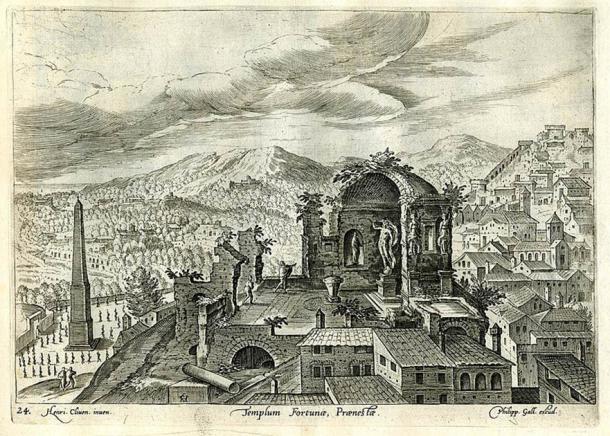
Palestrina is located just 35 kilometers from Rome and was a highly important town before the rise of Rome. Also home to the Temple of Fortuna Primigenia seen in this etching, Palestrina is where the Praeneste fibula was originally discovered. ( Public domain )
Placing Palestrina Back into the Spotlight
The Fibula Praeneste is without any doubt a highly important discovery for Italy, providing a crucial glimpse into the Old Latin language and the course of its development. A huge breakthrough for the history of the early Roman region, it once more placed the spotlight on the town of Palestrina, some 35 kilometers (21.7 miles) from Rome. Known in antiquity as Praeneste, it was the place of the fibula’s discovery.
Ancient Praeneste was connected to the capital Rome by the ancient road known as the Via Prenestina. Praeneste was a highly important Latin town and a crucial player in all major historical events before the rise of Rome. It is well known for the fascinating Temple of Fortuna Primigenia , founded in 204 BC and refined in 120 BC. Its magnificence and scale were awe-inspiring, and its remains can still be seen today.
The sheer complexity and ingenuity of its design made it a one-of-a-kind relic of the glorious Roman past. It was also the home of Claudius Aelianus, better known as Aelian, a 3 rd century AD Roman writer and teacher of rhetoric. He wrote numerous important works, two of which stand out as invaluable sources of earlier classical work and remain amongst the finest and most precious glimpses into the ancient Greek and Roman world-views.
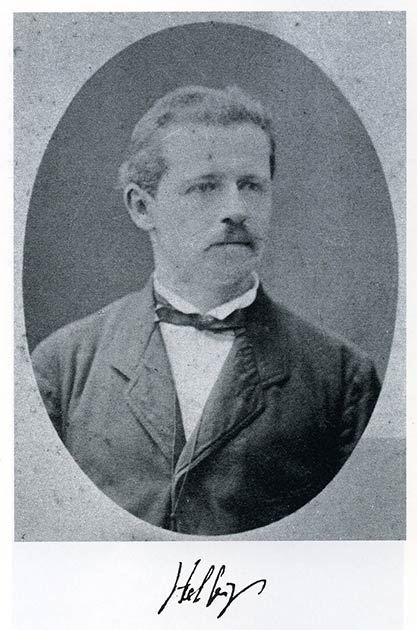
The reputation of German archaeologist Wolfgang Helbig has been restored thanks to advances in modern technology which have allowed for the definitive authentication of the Praeneste fibula. ( Public domain )
Posthumous Restoration of Helbig’s Reputation
When an important discovery is made and begins to resonate, as is the case with the Praeneste fibula, the scholarly world can become quickly divided in its astonishment. Doubts inevitably surface and the artifact’s authenticity is usually called into question, particularly when it is something like an inscription which is so easy to fake. Experts often claim that the find is a hoax.
But linguistics doesn’t lie. To fake an Old Latin sentence is next to impossible and would be difficult to pull off for even the most skilled of linguists. While Wolfgang Helbig was certainly one of only a handful of skilled scholars, the claims of his deliberate hoax were out of place and certainly unfounded. More than a century later, his reputation has been restored. Thanks to a little help from modern technology the matter has been laid to rest. The inscription is real. Now we can give thanks where thanks are due. The incredible find by Wolfgang Helbig brought us one of the oldest Old Latin inscriptions discovered to date.
Top image: The controversial Praeneste fibula is currently housed at the Luigi Pigorini National Museum of Prehistory and Ethnography in Rome. Source: Vobiscum / CC BY-SA 3.0
References
Campbell, G. and Moseley, C. 2013. The Routledge Handbook of Scripts and Alphabets . Routledge.
Holloway, R. 2014. The Archaeology of Early Rome and Latium . Routledge.
Maras, D. 2012. “Scientists declare the Fibula Prenestina and its inscription to be genuine ‘beyond any reasonable doubt’” in Etruscan News .
Meadows, D. 2011. “Praeneste Fibula Authentic?” in Rogue Classicism . Available at:
https://rogueclassicism.com/2011/06/10/praeneste-fibula-authentic/
Tikkanen, K. W. 2012. “The Consequences of Truth” in Bulletin of the History of Archeology .
Unknown. 2009. “Who Made the Praeneste Fibula?” in Archaeology Magazine . Archaeological Institute of America. Available at:
https://archive.archaeology.org/online/features/hoaxes/praeneste_fibula.html
Related posts:
Views: 0
 RSS Feed
RSS Feed

















 November 9th, 2020
November 9th, 2020  Awake Goy
Awake Goy 


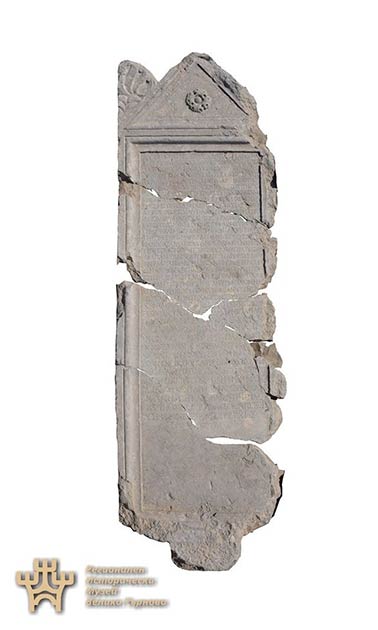


 Posted in
Posted in  Tags:
Tags: 
















